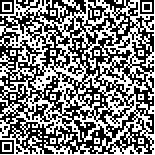| 引用本文: | 莫嘉浩,綦向军,高帅,刘惠平,朱俊霞,邓洁宜,谢雅颖,黎健敏,华荣.基于《新编国家中成药》治呕中成药组方分析[J].中国现代应用药学,2020,37(10):1171-1176. |
| MO Jiahao,QI Xiangjun,GAO Shuai,LIU Huiping,ZHU Junxia,DENG Jieyi,XIE Yaying,LI Jianmin,HUA Rong.Analysis of Composition Regularity of Chinese Patent Medicine for Anti-vomiting Based on New National Proprietary Chinese Medicine[J].Chin J Mod Appl Pharm(中国现代应用药学),2020,37(10):1171-1176. |
|
| |
|
|
| 本文已被:浏览 14500次 下载 7073次 |

码上扫一扫! |
|
|
| 基于《新编国家中成药》治呕中成药组方分析 |
|
莫嘉浩1, 綦向军2, 高帅2, 刘惠平3, 朱俊霞2, 邓洁宜1, 谢雅颖3, 黎健敏2, 华荣4
|
|
1.广州中医药大学, 第二临床医学院, 广州 510405;2.广州中医药大学, 第一临床医学院, 广州 510405;3.广州中医药大学, 针灸康复学院, 广州 510405;4.广东省中医院, 广州 510120
|
|
| 摘要: |
| 目的 探究分析《新编国家中成药》中治疗呕吐的中成药成方规律。方法 遴选并整理《新编国家中成药》所载的关于治疗呕吐的中成药处方,严格按照纳入与排除标准进行中成药筛选后提取药物,运用Microsoft Excel 2010进行频数统计、SPSS Clementine 12.0软件所提供的Apriori模版进行关联规则分析、SPSS 18.0软件进行聚类分析以及因子分析,其中聚类分析采用系统聚类法中的二分类变量资料的Ochiai算法进行,因子分析采用主成分分析法。结果 对最终纳入166个中成药处方进行统计分析,频次统计结果显示,使用频次>15次的药物有40种,规则分析结果显示共得到药对关联规则21条,3味中药药组关联规则19条,4味中药药组关联规则8条;通过聚类分析生成树状图后,从中提取出具有关联性的药组8组,因子分析结果显示最终得到公因子13个,共包含11个药组。结论 通过频次排序,药物中以理气药、化湿药为主;药对关联规则中理气化湿药对(陈皮→厚朴、陈皮→半夏)体现理气化湿的特点,3味与4味中药药组多是在陈皮→厚朴药对的基础上进行加味所得。陈皮→半夏可作为具有代表性的理气化湿药对以参与组成治呕中成药。在聚类分析与因子分析的结果中,针对呕吐的治法是以理气化湿为主,以消食导滞为辅。 |
| 关键词: 呕吐 中成药 数据挖掘 《新编国家中成药》 |
| DOI:10.13748/j.cnki.issn1007-7693.2020.10.004 |
| 分类号:R285.5 |
| 基金项目:广东省中医院中医学术流派传承工作室建设项目(E43604) |
|
| Analysis of Composition Regularity of Chinese Patent Medicine for Anti-vomiting Based on New National Proprietary Chinese Medicine |
|
MO Jiahao1, QI Xiangjun2, GAO Shuai2, LIU Huiping3, ZHU Junxia2, DENG Jieyi1, XIE Yaying3, LI Jianmin2, HUA Rong4
|
|
1.Guangzhou University of Chinese Medicine, The Second Clinical Medical College, Guangzhou 510405, China;2.Guangzhou University of Chinese Medicine, The First Clinical Medical College, Guangzhou 510405, China;3.Guangzhou University of Chinese Medicine, The Acupuncture and Rehabilitation College, Guangzhou 510405, China;4.Guangdong Province Traditional Chinese Medical Hospital, Guangzhou 510120, China
|
| Abstract: |
| OBJECTIVE To provide reference for the prescriptions of Chinese patent medicine for vomit by exploring and analyzing the composition regularity of them. METHODS The prescriptions of Chinese patent medicine for vomit were collected from the New National Proprietary Chinese Medicine. The prescription information were extracted after strictly screened with inclusion and exclusion criteria. The prescriptions were imported into Excel 2010 to analysis the frequency of drug use. The Apriori template provided by SPSS Clementine 12.0 software was used for association rule analysis. SPSS (ver. 18.0) was adopted respectively for cluster analysis and factor analysis. Cluster analysis was carried out by Ochiai algorithm of binary variable data, one of the systematic clustering methods. And principal component analysis was used for factor analysis. RESULTS One hundred sixty six prescriptions of Chinese patent medicine were included in total. The frequency analysis showed that 40 drugs were used more than 15 times. The association rules analysis found out 21 association rules of medicine pairs, 19 association rules of medicine combination of 3 kinds of herbs and 8 association rules of medicine combination of 4 ingredients. Moreover, 8 medicine groups with relevance were extracted from the tree map generated by cluster analysis. In sum, 13 common factors were obtained from factor analysis, including 11 drug combinations. CONCLUSION Through frequency sorting, the effect of high frequency Chinese medicine was regulating qi and resolving damp. The association rules of medicine showed that Citri Reticulatae Pericarpiumd(Chenpi)→Magnoliae Officinalis Cortex(Houpo) and Citri Reticulatae Pericarpiumd (Chenpi)→Pinelliae Rhizomac(Banxia) reflected the therapy of qi-regulating with damp-resolving. Three and four medicine combinations were based on the formulation of Citri Reticulatae Pericarpiumd(Chenpi)→Magnoliae Officinalis Cortex(Houpo). On behalf of the therapy of qi-regulating with damp-resolving, Citri Reticulatae Pericarpiumd(Chenpi)→Pinelliae Rhizomac (Banxia) can participate in the composition of anti-vomiting Chinese patent medicine. The cluster analysis and factor analysis indicated that the treatment for vomiting is mainly based on the principle of qi-regulating with damp-resolving, supplemented by digestion. |
| Key words: vomit Chinese patent medicine data mining New National Proprietary Medicine |
|
|
|
|
